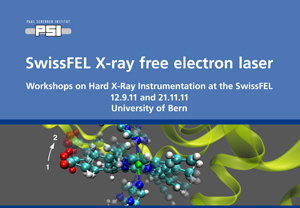Speaker
Dr
Andrea Caviglia
(Max Planck Research Department for Structural Dynamics, University of Hamburg)
Description
Transition metal oxides exhibit functional electronic properties still waiting to be fully exploited in real-word applications. An important step toward the practical use of quantum materials is to achieve on-demand control of their ground state. An innovative strategy is based on the use of light pulses in the mid infrared and THz range to initiate lattice dynamics and to substantially perturb the electronic properties of a solid. Strong vibrational excitation [1] is indeed capable of inducing electronic phase transitions, as demonstrated in a recent series of experiments on cuprates [2] and manganites [3] where transient superconductivity and metallicity were triggered.
In this contribution we will discuss the requirements for ultrafast x-ray diffraction experiments aimed at elucidating the evolution of the crystal lattice as transient electronic phases are induced by vibrational excitation.
[1] M. Först et al., Nat. Phys. doi: 10.1038/NPHYS2055.
[2] D. Fausti, R.I. Tobey, N. Dean, S. Kaiser, A. Dienst, M.C. Hoffmann, S. Pyon, T. Takayama, H. Takagi, A. Cavalleri Science 331, 189 (2011).
[3] M. Rini, R. Tobey, N. Dean, J. Itatani, Y. Tomioka, Y. Tokura, R. W. Schoenlein, A. Cavalleri Nature 449, 72 (2007).
Authors
Dr
Andrea Caviglia
(Max Planck Research Department for Structural Dynamics, University of Hamburg)
Dr
Michael Först
(Max Planck Research Department for Structural Dynamics, University of Hamburg)
Co-authors
Prof.
Andrea Cavalleri
(Max Planck Research Department for Structural Dynamics, University of Hamburg)
Prof.
Jean-Marc Triscone
(DPMC, University of Geneva)
Mr
Raoul Scherwitzl
(DPMC, University of Geneva)

